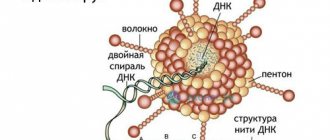Author of the article: Shelepov Alexander Sergeevich, Traumatologist-orthopedist
Many people know the disease gangrene. This is a pathology in which death of organs and some parts of the body occurs. The main sign of the disease is black, blue or brown skin on the extremities. It is important to note that pathology, in principle, can affect not only any parts of the body, but also any organs of the human body. However, most often the disease manifests itself on the extremities, changing the color of the tissue. The color change is usually due to iron sulfide, which appears in the body as hemoglobin breaks down. It is important to note that gangrene is considered a very serious disease that can be fatal without prompt and effective treatment. In most cases, if there is gangrene, amputation will definitely get rid of the problem. However, this is only in extremely advanced forms of pathology, when conservative treatment does not help the person at all.
In gangrene, tissues die due to blockage of blood and oxygen, which in principle must enter the body for normal functioning. If a person suddenly gets a bacterial infection, then gangrene very quickly spreads throughout the body, weakening it and injuring the skin.
When it comes to what gangrene looks like, it is usually a black, brown, or blue patch that spreads across the foot, arm, or any other part of the body. There are a large number of symptoms of pathology that you should immediately pay attention to.
Symptoms and signs of gangrene
There are different types of gangrene, and because of this, the symptoms also differ from each other, since everything completely depends on the form of the disease. There are dry, wet, and gas gangrene. Doctors also note that gangrene of internal organs occurs.
Experts identify the following signs of gangrene:
- with dry gangrene, the patient suffers from complete dehydration and rapid exhaustion. As a rule, this type of pathology develops quite slowly, in many cases several years. However, after some time, the feet or fingers already suffer from changes. The first sign that manifests itself is acute pain, which gets worse at night and is not blocked by conventional medications. After some time, the affected areas of the skin completely lose their sensitivity and become pale and cold. It is worth noting that there is no need to calculate the disease by an unpleasant odor, since this symptom is not characteristic;
- in the wet form, signs of gangrene are identified such as rapid development of the disease, cessation of blood supply to a certain area of the body, excess body weight, usually the area affected by the pathology swells and does not show a pulse. Over time, the skin turns green or turns blue or purple. This is somewhat similar to the decomposition of tissues. Due to wet gangrene, intoxication of the body often occurs, which negatively affects the body and can spread to any area, causing gangrene of the finger or gangrene of the leg;
- Gas gangrene can also quickly strike, the symptoms of which are severe pain, blue or gray skin color, pale edges of the affected area. If you press on the skin that is affected by the pathology, you may hear a rotten smell and see gas bubbles, which indicates the type of disease. The person suffers from severe intoxication, which often leads to shock.
There is not only gangrene of the extremities, but also of internal organs. Usually in this case the abdominal cavity suffers. Symptoms such as high temperature, nausea, pain, fever, rapid pulse, low blood pressure appear.
Diagnostics
To diagnose intestinal ischemia, your doctor may prescribe:
- General blood analysis. The doctor pays special attention to the level of ESR and leukocytosis; it is these analysis parameters that can serve as a signal about the likely development of the disease;
- Blood chemistry;
- X-ray of the abdominal cavity;
- Angiographic studies. The idea is to introduce certain substances into the blood to tint, which makes it much easier to read the results of an MRI scan. The results show the locations of the occlusions quite clearly;
- Laparoscopy. The method is based on visual assessment of the condition of the intestinal walls using special optical instruments inserted through incisions in the peritoneum. The method is used if quick decision-making is needed when there is a threat of rapid development of gangrene.
Dynamics of disease progress. In the absence of adequate treatment or delay in seeking medical help, intestinal ischemia enters an acute phase, which is called decompensated. The essence is severe damage to the blood vessels, bordering on an irreversible phenomenon - gangrene. It is customary to distinguish two stages in the development of decompensated ischemia:
- Reversible. The duration of this stage is no more than two hours. During this period, you can still take action to stop the development of the disease and restore blood supply. The four hours following this stage are very critical. At this time, there is still a theoretical probability of restoration of blood supply, but this probability decreases every minute, even when doctors try to help the patient;
- Irreversible stage or necrosis. Damage to the entire intestine or a specific part of it. Unfortunately, at this stage, even restoration of blood supply does not bring a positive result, since the anesthetized intestine will never be able to perform its functions.
Intestinal necrosis is a fairly broad concept that includes a lot of related processes and phenomena. The concept of gangrene more narrowly and accurately characterizes this stage of the disease. The first manifestation is an “anemic infarction” of the intestine itself. Its manifestation is spasm and pallor of the intestine. At this point, toxins are already beginning to accumulate and pose a real threat to the body. Due to thrombosis, hypoxia increases. Blood begins to pass through the wall of blood vessels and the intestinal wall turns from pale to dark red. This is a sign of a hemorrhagic infarction.
The intestinal wall becomes thinner and eventually collapses, causing blood and its components to leak into the abdominal cavity, leading to peritonitis. Toxins that accumulated in dying cells at previous stages begin to spread throughout the body in large quantities. Within 5-6 hours, complete tissue necrosis occurs, this is gangrene. No amount of restoration of blood flow (even with the help of surgery) can restore the affected tissues.
Causes of gangrene
In order to understand how to treat gangrene, you need to understand the cause of its occurrence and development. Talking about how gangrene begins, experts identify the following reasons:
- bedsores;
- damage to the body by electric shock, acid, alkali, low or high temperature;
- infection with Escherichia coli, Proteus;
- blood circulation disorder.
The disease gangrene also has a different cause. For example, gangrene can occur due to impaired metabolism, anemia, deficiency of vitamins, minerals and trace elements, and acute diseases.
When to see a doctor
Self-medication can be harmful to a person’s health, as can delaying a visit to a specialist, especially if it is gangrene of the limbs.
A surgeon treats gangrene. It is recommended to consult a doctor after the appearance of 2 or 3 symptoms. Under no circumstances should you wait until the area of skin turns blue, green, brown or black, as this is most likely already a severe form. If this is the initial stage of gangrene, then simple drug treatment will be enough to correct the situation. A severely affected, dark, numb limb is already a clear sign of a serious problem. There is no need to aggravate the condition, endure pain at night, experience fatigue and wait until the entire body is affected, and not just its external area. Now medicine offers effective treatment for gangrene, which in the initial stages helps almost 100%.
What is intestinal ischemia
In this case, the cells of the small or large intestine begin to receive an insufficient amount of blood, and therefore oxygen, which causes pain and disruption of the functioning of the intestine at the first stage, and then necrosis and gangrene of the small or large intestine.
Acute ischemia can occur suddenly; it is a condition that threatens the patient’s life and requires urgent medical measures aimed at restoring blood supply. The time factor is especially significant in this case: with the onset of necrosis, and even more so with the development of gangrene, restoration of blood supply will no longer eliminate the problem of tissue necrosis.
If ischemic intestinal disease does not develop acutely, but gradually, treatment must still be started immediately, as there remains a high risk of the disease progressing to the acute stage, which means that the risk of developing such dangerous complications as necrosis and gangrenous lesions remains.
The reasons why intestinal ischemia occurs and progresses to the stage of decompensation are divided into two categories:
- Occlusive form of ischemia (complete blockage of the blood vessels supplying the intestines). The cause is most often venous thrombosis, which is quite common in patients with various heart defects or atrial fibrillation. Ischemic manifestations are provoked by high blood coagulability, persistent increased pressure in the portal vein, and obliterating atherosclerosis. Sometimes occlusions occur after major surgical operations, since the body during this period produces increased thrombus formation in order to compensate for bleeding.
- The non-occlusive form still has a not entirely clear etiology, but most often this condition is associated with chronic heart failure, severe dehydration, as well as individual intolerance to certain medications (this form of ischemia occurs extremely rarely in women taking oral contraceptives).
Clinical symptoms of ischemic disease in a compensated form, which over time may become irreversible:
- Abdominal pain that occurs half an hour after eating and does not have a specific localization; the pain manifests itself as spasms. Antispasmodics help relieve an attack. The more the pathological process in the arteries progresses, the stronger the pain attacks become.
- Severe flatulence and rumbling in the stomach, constipation alternating with diarrhea.
- Auscultation reveals a systolic murmur at the point of projection of the mesenteric artery.
- Severe intestinal ischemia leads to significant weight loss in patients.
Preparing to visit the doctor
There are no general rules or steps that need to be taken before going to see a specialist. The only thing that can be highlighted is proper nutrition a few days before diagnosis, since it necessarily includes a general blood test, which shows the condition of the body and its level of infection. It will be much better if at least your blood sugar level is not elevated during donation. So it is recommended to at least minimally monitor your diet before going to a specialist who will do an examination, identify the cause, type and stage of a disease such as gangrene of the lower extremities or gangrene of the hands.
Treatment
Treatment of gangrene is carried out only in a hospital setting. So, if a person is diagnosed with gangrene of the leg, then he will definitely not be able to get rid of it at home. For treatment there are measures of both a general and local nature. Due to the fact that gangrene of a finger or any other part of the body contributes to the death of tissue, the main goal is to preserve the tissue and prevent its further death.
Doctors insist on bed rest, as well as conservative methods that stimulate blood circulation, improve tissue, and eliminate symptoms. Patients are often prescribed analgesic drugs, blockades, and in rare cases, blood transfusions are prescribed. If an area of the body cannot be saved, doctors prescribe removal of the affected area or organ and prosthetics.
Decompensated ischemia - intestinal infarction
Decompensated intestinal ischemia is a severe degree of vascular damage, which can lead to irreversible phenomena - the occurrence of intestinal gangrene. It is customary to distinguish between two phases of decompensated ischemia.
The first phase is reversible, lasting up to two hours, the next 4 hours are characterized by relative reversibility with a high probability of an unfavorable outcome of events. After this period, necrosis inevitably begins - gangrenous lesions of the intestine or a separate part of it. At this stage, even if the blood supply can be restored, it will no longer be able to restore the functions of the necrotic intestine.
Intestinal necrosis, or a narrower concept that characterizes this condition - gangrene, has a vascular factor as its primary cause: when arterial blood flow stops, a spasm of the intestine occurs, it turns pale, and a so-called “anemic infarction” of the intestine occurs. During this period, toxic substances - products of incomplete metabolic transformation - begin to gradually accumulate in the affected organ. Thrombosis intensifies as a result of hypoxia, the vascular wall ceases to be impermeable to blood components. The intestinal wall becomes saturated with them and changes color to dark red. A hemorrhagic infarction develops. A section of the wall begins to collapse, which causes the penetration of blood components into the abdominal cavity, intoxication intensively develops, and peritonitis occurs. After 5-6 hours, complete tissue necrosis occurs, which is called gangrene. Now, even if blood flow is restored through surgery, tissue necrosis can no longer be eliminated.
Home remedies
As a home treatment, you can use compresses and lotions made from golden mustache leaves, white lily oil, a compress of dry clay and onions. However, you should not rely only on these remedies, because traditional medicine does not treat all diseases, especially serious ones. Someone advises taking rye bread, chewing it, spitting it out and applying it to the affected area. But with such self-medication, it is impossible to guarantee an effective result, unlike a blockade, which will completely relieve pain.
Myths and dangerous misconceptions in the treatment of gangrene
Many, having opened the Internet and the first website they came across on a topic of interest, read an article about self-medication and getting rid of gangrene, believe that a few compresses of medicinal herbs and rubbing some homemade solution into the affected area of the skin will help get rid of the disease and avoid death. In fact, this is not the case, because almost always the patient needs drug or even surgical treatment to save the body. It is not enough to simply take analgesics to minimize the pain and apply some ointment in the hope that the dark spots will disappear from the skin. For complete effective treatment, an integrated approach and constant participation in the course of treatment by the surgeon are required. This is the only way to truly cure the disease, and not just heal it.
Prevention of gangrene
Currently, scientists and doctors have not yet developed a specific prevention of gangrene that gives a 100% result. However, there are several preventive recommendations that can protect you from the disease:
- it is necessary to compensate for diabetes mellitus;
- It is recommended to avoid high temperatures;
- if a wound appears on the body, it must be carefully treated to avoid any infection;
- it is worthwhile to promptly treat diseases associated with internal organs;
- doctors advise giving up bad habits;
- It is best to strengthen your immune system and balance your diet.
Rare but extremely dangerous forms
A progressive form of necrosis called Noma
Doctors call it Noma. It turns out that this is nothing more than gangrene of the face. A very rare disease that mainly affects children . Wet gangrene on the cheeks and in the mouth is considered a complication of scarlet fever or measles in weakened children, however, there are cases whose etiology remains unclear, so the main role in the development of necrosis on the face is still assigned to decreased immunity. Facial gangrene in adults is also associated with exhaustion, decreased defenses, and severe cardiovascular pathology, when saprophytes living in the body become pathogenic for it. And, in addition, the addition of anaerobic infection and other pathogenic microflora cannot be ruled out.
facial gangrene - noma
Symptoms of gangrene develop rapidly, the prognosis of the disease is very serious, treatment is symptomatic, however, first of all, it is aimed at the underlying disease.
The disease described by Fournier
Many have not even heard that there is a type of necrosis that affects the male genital organs (scrotum, testicles, perineum), called Fournier’s gangrene. This disease was first described at the end of the 19th century by a French doctor and, as is customary, the disease was named after him. However, it has many names, it is called necrotizing fasciitis of the genital organs, phlegmon of the perineum, gangrenous erysipelas of the scrotum... And this is not the whole list.
Fournier's gangrene is a very terrible infectious process, characterized by high mortality, which has different course options (wet and gas) depending on the cause of its occurrence. This type of necrosis can be caused by anaerobic flora, streptococci, Escherichia, Proteus, staphylococci, and enterobacteria.
The development of necrosis in such delicate places is facilitated by perineal trauma, chronic diseases (anal fissures, diabetes, alcoholism), and treatment with hormonal drugs.
Fournier's disease develops rapidly with increasing symptoms of gangrene:
- Intense pain appears in the genitals, they become extremely sensitive to any touch;
- The skin over the affected areas becomes dark red, and necrosis begins with the release of pus.
- Treatment cannot be delayed and is limited to immediate surgery and the prescription of broad-spectrum antibiotics.











